#Slovak cinema
Explore tagged Tumblr posts
Text

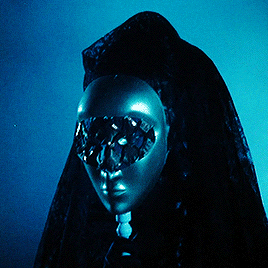
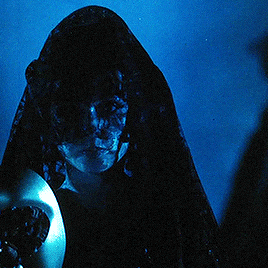

Zuzana Skopálová in Nebojsa (1988) dir. by Julius Matula.
#Zuzana Skopálová#Nebojsa#Fearnot#Fearless#Julius Matula#Czechoslovak#Slovak#Czechoslovak Cinema#Slovak Cinema#Czechoslovak Fairy Tale#Slovak Fairy Tale#Fairy Tale#My Gifs
135 notes
·
View notes
Text
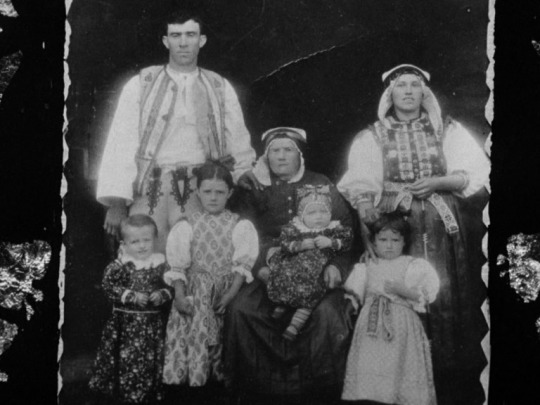

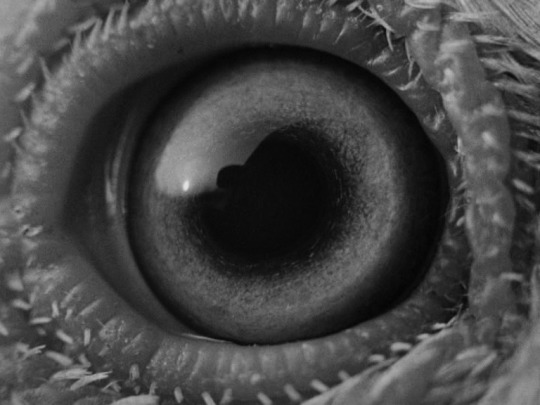

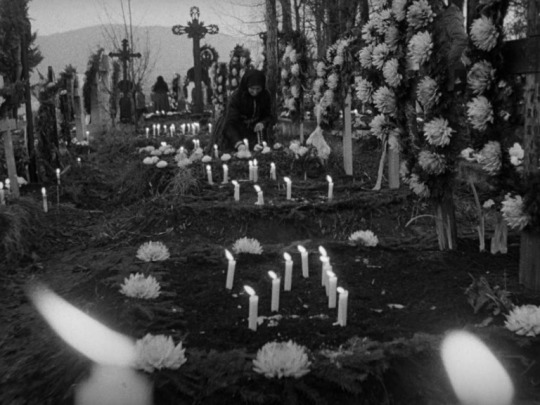
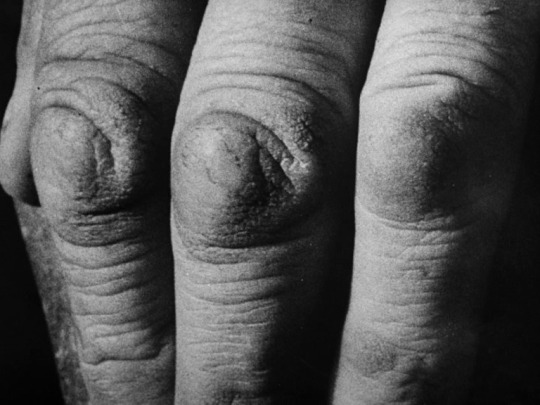
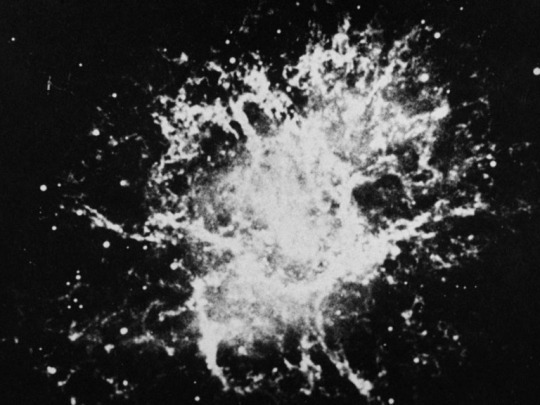

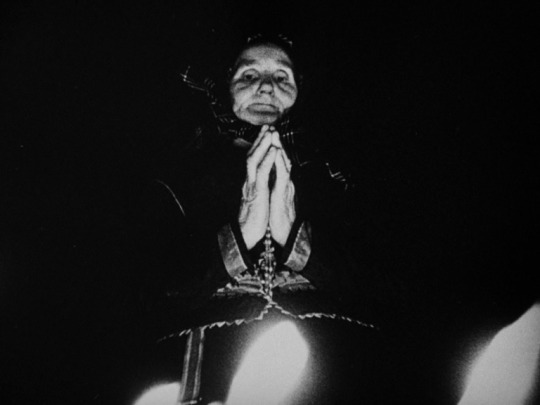
Pictures of the Old World, Dušan Hanák, 1972, Czechoslovakia
#cinema#film stills#world cinema#czechoslovak new wave#arthouse cinema#slovak#czechoslovak#slovak cinema#slovakia#dušan hanák
145 notes
·
View notes
Text
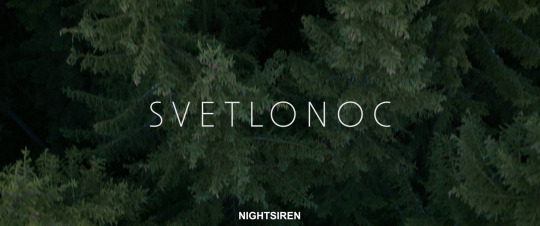
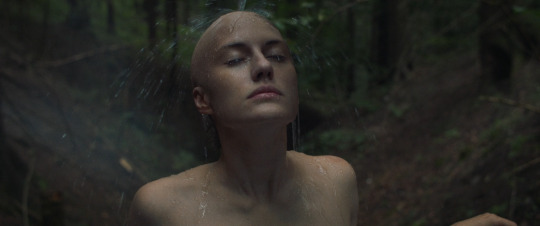
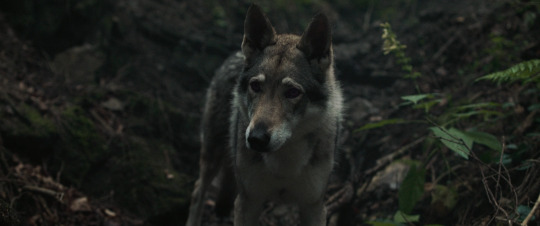
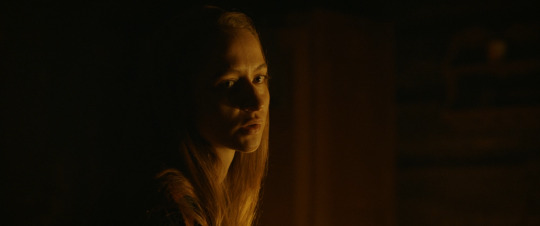
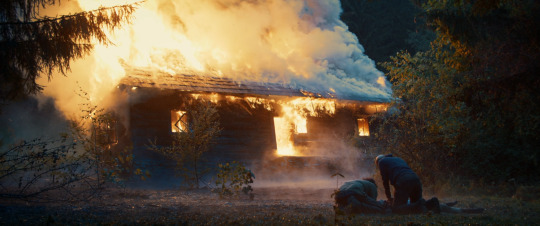

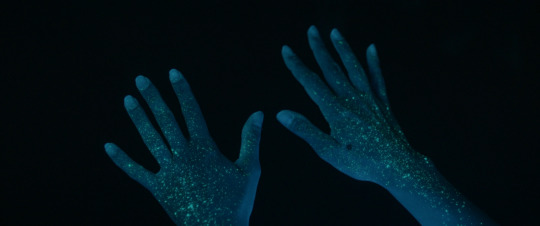



Nightsiren (Tereza Nvotová, 2022)
#natalia germani#eva mores#svetlonoc#Tereza Nvotová#nightsiren#slovakia#female filmmakers#female film directors#women in film#female directed films#female directors#female screenwriters#slovak#slovak cinema
57 notes
·
View notes
Text
Czechoslovak fairytale films, aka Libuše or Miroslava Šafránková and her cringefail prince.
#Libuše Šafránková#Miroslava Šafránková#every time lol. the Cinderella and the Evening Star princes especially#czechoslovak cinema#malá mořská víla#tři oříšky pro popelku#the prince and the evening star#sol' nad zlato#three wishes for cinderella#the salt prince#Princ a Večernice#fairytale films#czech cinema#slovak cinema#fantasy films
7 notes
·
View notes
Text
Vianočné oblátky (Christmas wafers), 1977










#vianočné oblátky#christmas wafers#christmas movies#czechoslovak cinema#slovak cinema#slavic folklore
3 notes
·
View notes
Text
So I watched The Chambermaid (2023)

BRO WHY IS IT SO DEPRESSING
That aside, I love how the movie was made. The visuals!!! The lighting and costumes and everything! For some reason I usually hate the way modern Czech movies look, idk I just can't describe it, but this movie was actual eye candy.
I disliked or outright hated most of the characters (except Anka my beloved) but you still can't help but feel sorry for them, even the assholes (yeah ok except the father, fuck him entirely). They're just so real, no one felt like a caricature personally
There's so many languages! There's Slovak, there's Czech, there's German, there's Hungarian!!!
But what I honestly love the most about the movie is how it completely shatters any and all romanticization of the time period or like, of people in general
Unsettling depictions of power imbalance between both classes and genders! No one is spared!
People shit in buckets and someone has to take it out!
The rich daughter is entitled and bitchy!
And no, she does not have shaved armpits
Period-accurate nationalism!
The mother has so much internalized misogyny she's almost as bad as the men (a bit of a hyperbole cuz. can't compare to the literal wife-beater)
Depiction of WWI injuries and PTSD attacks!
Period blood on-screen!
People making fun of dead politicians!
The grim reality of homemade abortions!
Superstition and folk magic* involving gross ingredients!
The movie literally just went and said "fuck all of your romanticization" and I love it
I didn't like the story. I rooted for the girls but there was just so much bad stuff happening it made the movie hard to enjoy. But the art truly was there
*no actual magic was involved, but it was a pretty accurate depiction of folk beliefs
28 notes
·
View notes
Text

You know who's really underrepresented in historical immigration documentaries? Slovaks.
You know who has an interesting history despite its current socio-economic situation? Arkansas.
I've seen Latza's indie films first hand, and I can tell you this documentary is going to be great. Just check out the production quality of their Kickstarter intro video.
If they meet their goal, the documentary is free, but consider backing them so you know when it comes out.
https://www.kickstarter.com/projects/slovak/slovak-arkansas
#slovak cinema#kickstarter#arkansas#slovakia#slovak diaspora#indie film#documentary#i really think this is going to be cool and i would love to hear their tales#$2000/$18500#Holy shoot it just opened up and it's already 1/9th of the way there
27 notes
·
View notes
Photo


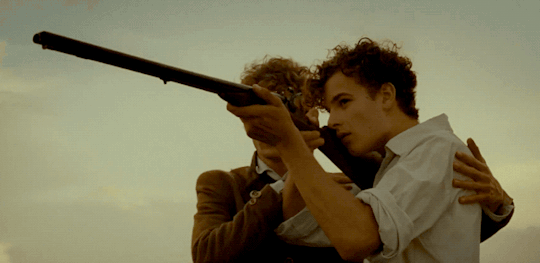
Furiant (Peacock, 2015) dir. Ondrej Hudecek
#furiant#peacock#ondrej hudecek#julius feldmeier#cyril dobrý#czech cinema#slovak cinema#short film#lgbtqia#queer cinema#own gif#own post
18 notes
·
View notes
Text







Dragon's Return (1968, Eduard Grečner)
Aka The Return of Dragon, original title: Drak sa vracia.
#Dragon's Return#Eduard Grečner#The Return of Dragon#Drak sa vracia#Second Run#black-and-white#1960s film#Slovak cinema#Czechoslovakia#monochrome#Czech cinema
6 notes
·
View notes
Text

Curly haired babes enthusiasts (a.k.a., Dívka na koštěti fans) rise up
#my art#messy hair#red hair#witch#goth#czech#czech cinema#slovak#czechoslovak#čumblr#ťumbľr#dívka na koštěti#fictional crushes#saxána#czech republic#tra--nick's art#fluffy hair#fanart
315 notes
·
View notes
Text



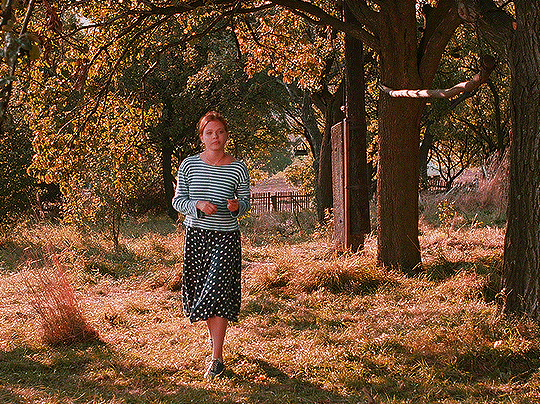

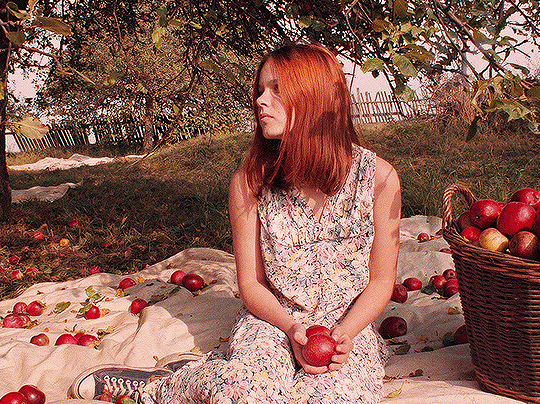
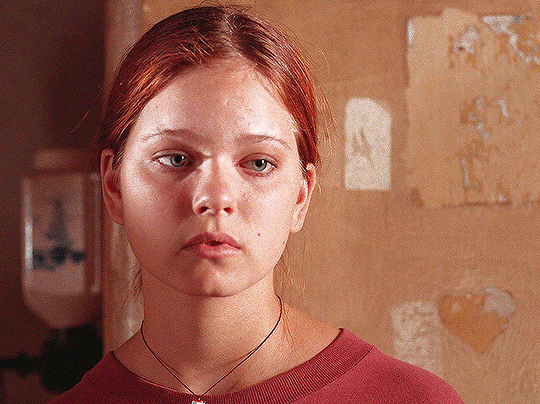
Zuzana Šulajová in Záhrada / The Garden (1995) dir. by Martin Šulík.
82 notes
·
View notes
Text
𓈒 ୭ৎ ˖˙ ᰋ ── ALRIGHTY APHRODITE
aka gwen's profile

au masterlist - everything for the AU is under #📷 ͡ ꒱ GwenCaufield

ꪆ୧ BASICS !
name: Gwendolyn Caufield
nicknames:
gwen (everyone)
wendy (luke)
winnie (juraj)
winnie the pooh (cole)
lyn (parents)
dolly (jack, trevor and alex)
birthday and zodiac: october 31st 2004, scorpio
location:
mosinee, wisconsin (former)
montreal, quebec (currently)
ꪆ୧ ABOUT !
personality: gwen is more on the quiet side in general, more reserved and calmer, especially around new people. But when she gets more comfortable, she's a lot like Cole, can be a little loud, playful, silly, teasing and sarcastic. She’s a really sweet girl but she's just not as expressive as others. She’s really good at keeping in her emotions, so it's rare to really see her angry. She has an infectious laugh and is honestly quite the nerd. She enjoys spending time with her friends and family but likes to be alone as well. She's an introvert.
good traits: hard-working, passionate, trustful and reliable, a good listener, warm-hearted
bad traits: her determination can turn into stubbornness, brutally honest, scared of commitment in relationships,
quirks: lip biting, being fidgety, doodling on anything, getting lost in her thoughts, rambling when she's nervous
likes: photography, horror movies, drawing, thunderstorms, reading, anything autumn, chapstick, jeans, halloween obviously, steve harrington, the canucks, music, the cinema, napping, sweaters, lockets, smiski’s, lollipops, her guitars
dislikes: hot weather, driving, fireworks, the smell of grapefruit, wearing socks in bed, stand up comedy, doing the dishes, being compared to her brothers, rude fans, sad juraj,
hobbies: drawing, pottery, journaling, scrapbooking, ballet, singing, playing the guitar and piano
fears: heights, dying alone, being stuck in tight spaces, loud noises
strengths: creative, attention to detail, determined, organized
weaknesses: talking about her feelings, self critical, perfectionism,
languages spoken: english (fluent) french (70%) slovak (20%)
occupation/profession: photographer for the montreal canadiens nhl team
ꪆ୧ RELATIONSHIPS !
parents:
paul caufield
kelly caufield
sibling(s):
brock caufield
cole caufield
best friends: luke hughes, arber xhekaj, lily dao, mark estapa
friends: kaiden guhle, the rest of the habs team, trevor zegras, jack hughes, quinn hughes, alex turcotte, tate mcrae + more
love interest: juraj slafkovský
pet(s): none at the moment but she really wants a cat
ꪆ୧ MORE !
outfits: gwen’s closet mostly has a lot of darker shades but she will wear any color really. She loves wearing jeans, fishnets/different patterned tights, short skirts, leather jackets, corset/vests, hoodies etc. She loves thrift shopping so she has a large range of different clothes, for shoes she mostly wears boots, sneakers etc. Link to her closet is right here.
accessories: she mostly accessories with her large collection of sunglasses and bags, With her larger/medium bags she likes adding small addons to them, pins, sonny angel/smiski/ keychains, small plushie keychains, photocard holder keychains ect. With her small bags she likes tying ribbon boys to them and her sonny angel/smiski keychains. She will occasionally wear a fake pair of glasses, just to add something different to her outfit. For headwear she mostly wears earmuffs, headbands and beanies. Will sometimes wear scarfs, but really her accessories really just depend on the outfit she's wearing.
jewelry: she's a big fan of necklaces and rings. For necklaces she loves lockets, she owns many. But the one she wears the most is the one Juraj got her. For rings she wears multiple at a time, mostly four and she's always changing them out. She’s always changing out her earrings and belly button and nose piercing, she likes having something new every once in a while, she gets bored with the same things.
makeup: gwen doesn't really use a lot of makeup, mostly just her eyelashes, eyeliner, a little bit of eyeshadow and some blush and her lips. she will sometimes wear some highlighter on her nose, cheeks and in the corner of her eyes but not often.
scars: has a few scars on her feet from the years of her doing ballet, but none othem are really that noticeable.
sexuality: bisexual
height: 5’5
piercing(s): her bellybutton, two in each ear, nose
tattoo(s): her chest, lower back (wants more)
face claim: ugh_liza
ꪆ୧ FAVORITES !
food(s): cereal, pasta, muffins, pomegranates, cherries, tomato soup, frozen yogurt, honey
drink(s): hot chocolate, dr pepper, hot and cold tea, water
color(s): black, reds, oranges, greens, browns
animal(s): bears, bunnies, bats
season(s): autumn, winter
bands and artist: fleetwood mac, wallows, the smiths, florence + the machine, lana del rey, hozier, the strokes, paramore, avril lavigne
show(s): supernatural, stranger things, survivor, gilmore girls, american horror story,
movie(s): hocus pocus, halloweentown series, scream series, halloween series, the fear street series, the amazing spider man series
person: her boyfriend juraj and her platonic soulmate luke hughes
ꪆ୧ FUN FACTS !
Gwen’s Nickname from Cole is WInne the Pooh, she absolutely loves anything honey and bears!
She can play the piano and guitar
She was six when she received her first camera, it was a digital one that she got for her birthday and she never let it out of her sight.
Over the years, her parents noticed that her love for photography only got stronger, and the fact that she was really good helped with them deciding on buying her a canon.
Gwen was part of the newspaper for her school, taking pictures and helping write articles.
Gwen did ballet since she was a little girl, only stopping when she was 17 so she could focus more on photography.
Gwen was always the teachers favorite, something her brothers loved to tease her about
She was going to join luke at umich, but decided against it when she got a job offer in montreal
Her best friend is Luke Hughes, they are inseparable.
Her favorite holiday is Halloween, and it's only right since it's also her birthday!
She's very serious about Halloween, loving to dress up, watching horror movies, eating tons of candy, and pumpkin carving.
She loves watching old horror movies, she's a big nerd about it !!
When she gets overwhelmed she becomes very quiet and a little clingy.
She doesn't go anywhere without her headphones, music is her escape.
Quinn bought her a skateboard for her 16th birthday and she almost cried, she loves it so much!
She has a great relationship with the habs team, they all think of her as a little sister . . . besides Juraj of course.
Cole is her safeplace, she knows that no matter what, her big brother has her back!
Gwen's bisexual awakening was thorn from the hex girls! And taylor momsen
She has such a loud and contagious laugh that you can't help but join in.
She's very popular amongst the fans, and she has no clue why, she likes to keep to herself.
She has 3 million followers on TikTok, and Jack and Trevor like to tease her about her being a content creator, she refuses to call herself that.
Poor girl gets teased by Trevor and Jack a lot, but they do love her! She's their little sister they never asked for.
Out of all of Cole's teammates, she would say she's the closest to arber (besides juraj) they have a great friendship! If she's not sitting next to juraj on the plaine she's sitting next to him.
The love of her life is Steve Harrington . . .
Will forever be upset that she couldn't have her teenage years in the 2000’s
She has a wonderful voice but she's only comfortable singing in front of a few people!
She writes her own songs, but they are hidden in one of her journals.
She wants to get more tattoos but she's scared to give cole and brock another heart attack
a big resident evil girly
Has an internal debate everyday in her head if she should dye her hair, she's never done it!
As the youngest sibling, she's overly protected, by like everyone . . .
She's very soft tempered
She lives with Cole, and her room is her favorite place to be!
She loves going on walks
Gwen has trouble making friends, that's why she's so grateful to have luke in her life, he's really helped her get out of her shell and introduce her to his friends.
She loves art, she's excellent at drawing and painting, mostly with watercolors.
Her favorite flowers are tulips.
Juraj is her first boyfriend, she's only dated one other person besides him and that was her first girlfriend luna.
They dated for 2 years, but Gwen broke up with her in Their senior year when she found out that luna was cheating on her,
Poor Gwen was heartbroken after that, and became very distant from the thought of loving another.
Her baby is her record player, and every year Luke and Cole buy her a new record for her birthday.
Her favorite band is Paramore and she's been to 6 concerts!
She has a collection of a ton of different cameras she's gotten over the years!
She can be very sarcastic when she wants to, mostly when she's really tired or when Jack talks too much . . . so always.
Had the biggest and i mean biggest crush on quinn hughes, the only one who knows about it is luke and he loves to tease her about it.
She's the passenger princess . . . she cried during her drivers test, she hates driving.
Always has a book in her bag.
When she gets shy, her face and ears get all red
she’s secretly such a romantic
She’s a big cuddler
Secretly such a yapper omg
Gwen has two instagrams, her public one is @/gwendolyn_caufield and her private one is @/winnethepoohbear
Gwen is a sweet girl who's just more on the quiet side, she's fiercely loyal to the people she loves, and is just a great person to be around!
ꪆ୧ HER ROOM AESTHETIC !
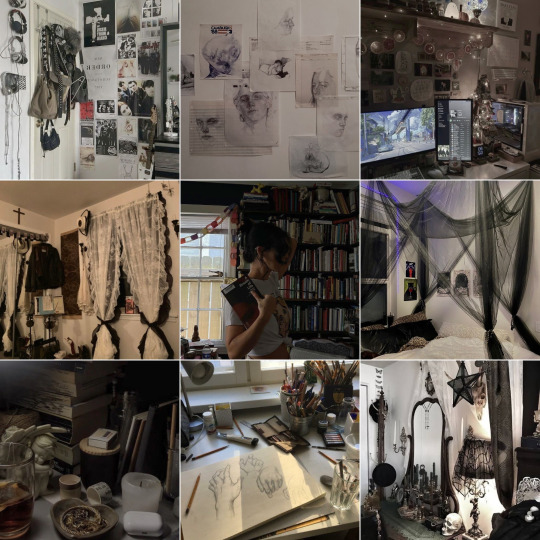
ꪆ୧ HER CLOTHES AESTHETIC !
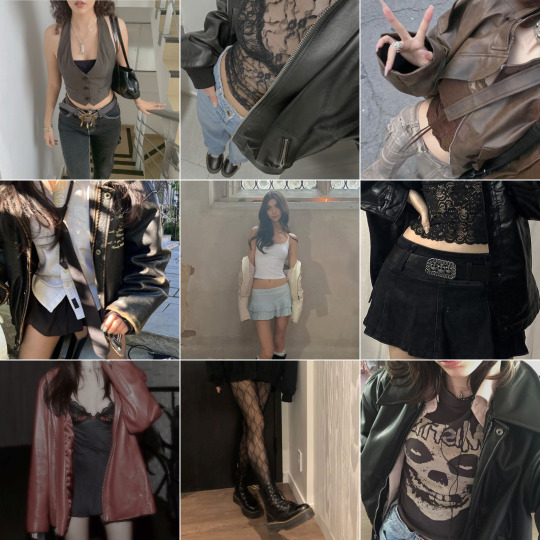

˖ ་ 💭 roro’s notes ( Gwen my love 🫶🏻 I’m actually in love with her , and I really hope you guys grow to love her as well !! Please feel free to send in as many asks as you want , and please let me know if you would like to be added to the taglist )
°. — taglist ( @lovings4turn @toasttt11 @cixrosie )
©️WINTFLEUR
#📷 ͡ ꒱ GwenCaufield#nhl#nhl hockey#nhl x oc#nhl imagine#cole caufield x oc#cole caufield#montreal canadiens#habs#nhl x reader#juraj slafkovsky#juraj slafkovský#juraj slafkovsky x reader#juraj slafkovsky imagine#caufield sister!#luke hughes#nhl fluff#hockey imagine#hockey fluff
98 notes
·
View notes
Text

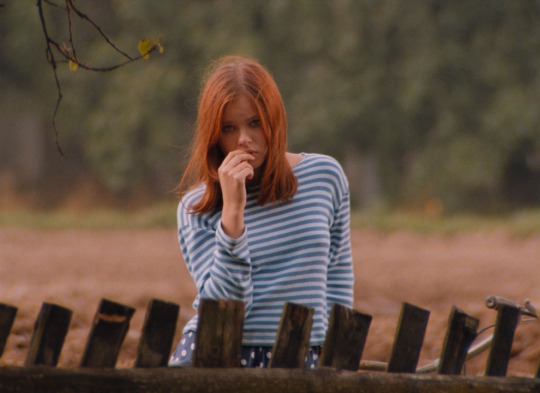



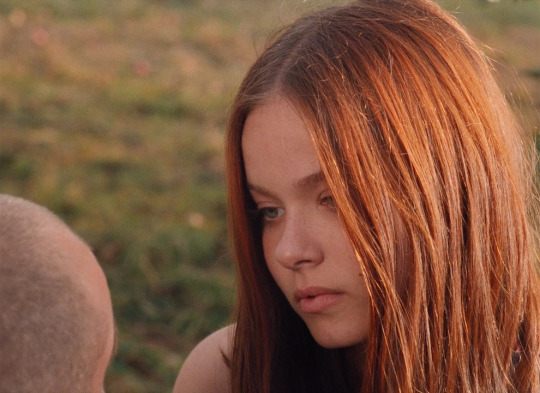

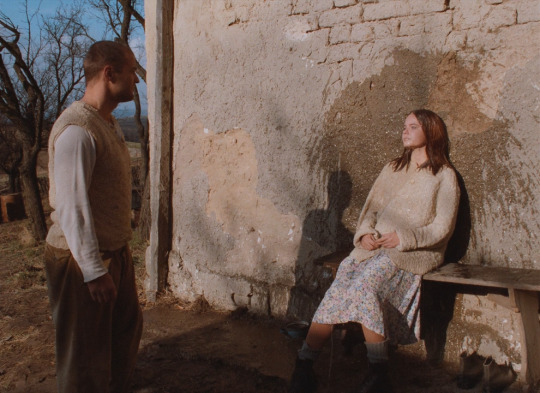


The Garden (Martin Sulík, 1995)
27 notes
·
View notes
Note
have you ever watched the popelku (cinderella ish) film?? it's a winter classic here in germany and in the czech republic but i'm wondering if it's popular in slovakia too? since it was a collaboration between ddr and czechoslovakia back in the day but it's only in german and czech (i think) so idk how people in slovakia feel about it
Oh my goodness. One thing people need to know is Czechoslovakian film did not fuck around!!! The costumes and sets are all incredible. Popelku is probably one of the most popular - if not the most. It's a lovely cinderella retelling. The title can be translated to three wishes for cinderella or three nuts for cinderella lmao

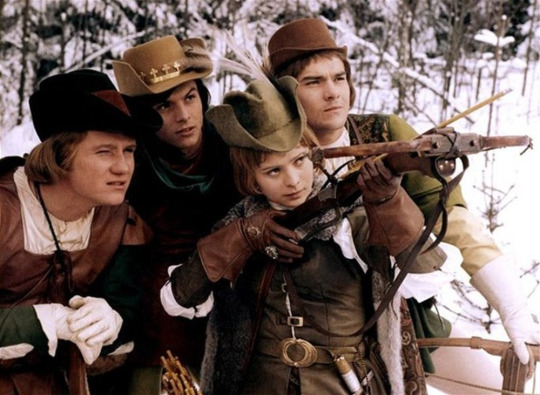
We tend to watch a dubbed Russian one which is hilarious (Morozko - Russian, Mrazík - Czech) about father frost, a cinderella type girl, a selfish man who's turned into a bear and baba yaga. It's a mix of different fairytales.
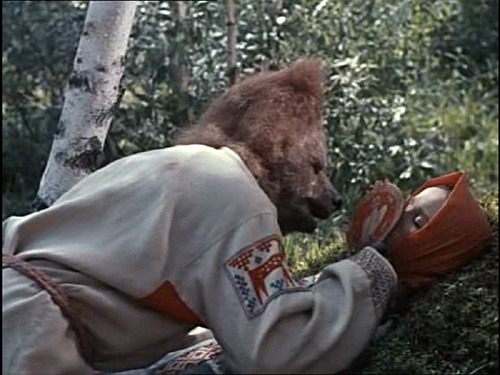


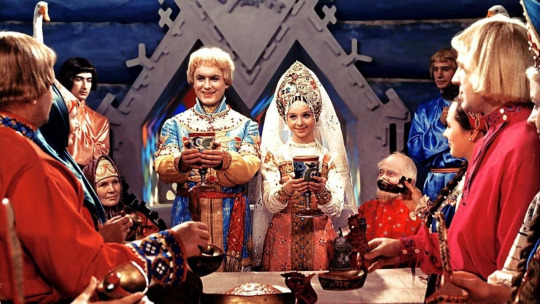
Under here I'll put more Czechoslovak films that i love
Give the devil his due (s čerty nejsou žerty) - a demon takes the wrong person to hell, a magical wolf's tail and 3 wishes. This one is super popular too.

The Girl on the broomstick (Dívka na koštěti) - facing 300 years detention, a witch escapes to the human world

Cosy dens (pelísky) - about a block of flats during russian occupation at christmas-time and subsequent prague spring of 1968. This is a really good insight to communism in czechoslovakia - you could only have the boots that were allowed. The son has new boots from usa (i think) and a haircut like the beatles. a girl argues with her dad because she says the food is like italian gnocci rather than czech dumplings. It's very good!

I enjoy the world with you (S tebou mě baví svět) - a group of dads take their kids to a cabin in winter for skiing etc and just total carnage because they're in charge (it's so funny)
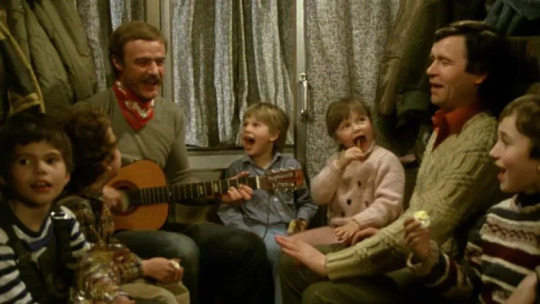
The insanely sad princess - (Šílene smutná princezna) - both want true love but are being put into an arranged marriage

The princess with the golden star (Princezna se zlatou hvězdou) - fleeing an evil king (and future husband) into the arms of a handsome man and also has a golden star on her forehead
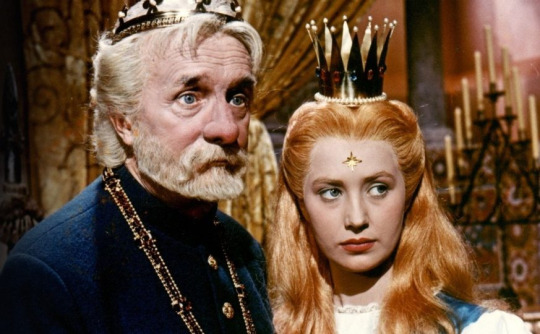
and one of my favourites is called vodník in slovak according to my partner but i literally cannot find it anywhere?? It's about people who live in an underwater world and can move on the land as a vodnik in folklore is like a water creature.
Edit: jak utopit dr mracka was the vodnik one
anyway old czechoslovakian movies were real cinema
35 notes
·
View notes
Text
The 1968 Prague Spring: Separating Fact from Fiction
Much of the below is translated or adapted from an article written by the Russian historian and political scientist Nikolay Platoshkin. The article can be found here. You can find an identical blog post with hyperlinks to sources here.
Victors write history, and the historical narratives concerning the events of the Cold War are no different. The “Prague Spring” of 1968 is often shrouded in myths that serve the political interests of the hegemonic capitalist countries. The prevailing narrative typically presents the events as follows: economic and political reforms in Czechoslovakia, sparked by the election of the intrepid Alexander Dubček as First Secretary of the Communist Party in January 1968, were brutally suppressed by the invasion of Warsaw Pact troops on August 20-21. Naturally, the sympathies of the “free world,” particularly the United States, are portrayed as being aligned with the brave Czechoslovak reformers. However, the reality is more complex.

Genuine political and economic reforms in Czechoslovakia began long before the “Prague Spring,” influenced by developments in the Soviet Union during the early 1960s. As the Soviet Union under Khrushchev embarked on a period of de-Stalinization, it sparked a wave of reformist thinking across its satellite states. Under the leadership of Antonín Novotný, who had been President of Czechoslovakia and General Secretary of the Communist Party since 1953, the country initiated the rehabilitation of victims arrested during the Stalinist period. (The future leader of Czechoslovakia in the 1970s and 1980s, Gustáv Husák, was one of these, arrested in 1950 and released in 1963, a committed communist throughout.) Censorship was eased significantly, and Czechoslovak cinema, particularly the “New Wave” movement, gained recognition across Europe, with directors like Miloš Forman emerging internationally, as seen with his film Black Peter. A pivotal moment in this period was the adoption of a new economic policy in 1965, directly inspired by the Soviet Union’s Kosygin reforms. This policy aimed to decentralize economic planning, granting enterprises greater autonomy within a framework of business accounting.
The Soviet Union acted as the primary catalyst for reforms in Czechoslovakia, particularly after the new Soviet leadership under Leonid Brezhnev came to power in October 1964, which further accelerated reforms in Moscow and Prague. However, by late 1967, internal conflict within the Czechoslovak Communist Party intensified. Students from the Strahov dormitories in Prague launched a sizable protest over power outages, prompting Novotný to cease reforms and ban liberal journals and films. The widespread unpopularity of these moves led members of the party’s Central Committee to oust Novotný. This coalition of strange bedfellows included noted liberal reformers like Husák, Čestmír Císař, and Jozef Lenárt joining forces with conservatives like Vasil Biľak, Drahomír Kolder, and Jiří Hendrych. When Novotný sought a lifeline from Brezhnev in December 1967, Brezhnev refused, partly because he viewed Novotný as an ally of his Soviet rival, Alexei Kosygin.
During heated debates within the Czechoslovak Communist Party’s Central Committee, which began in October 1967, Novotný suggested Alexander Dubček as a compromise candidate for First Secretary, a proposal that Brezhnev accepted. Dubček, who had lived in the USSR from 1925 to 1938 (where he was a classmate of Brezhnev) and was seen as a reliable ally, was considered a weak political figure, making him acceptable to both liberal and conservative factions within the party. He was also of Slovak descent, which would appease Slovak nationalists who opposed the unitary state. On January 5, 1968, Dubček was narrowly elected First Secretary by just one vote. Brezhnev’s unexpected visit to Prague in December 1967 was interpreted by the U.S. as a reluctant intervention in the party’s internal struggles, given the lack of a clear alternative to Novotný. Far from the enterprising reformer portrayed in Western media, Dubček was initially meant to hold the party line, something that he promised to do, part of a pattern of deception and careerism.

In February 1968, the U.S. State Department agreed with the U.S. Embassy in Prague’s recommendation to refrain from showing goodwill toward Dubček’s regime, viewing it as an unstable coalition of right and left forces. The U.S. chose not to act despite holding significant leverage at the time, stemming from the U.S. Army’s seizure of Czechoslovakia’s gold reserves during the liberation of western Czechoslovakia in 1945. The gold had been taken by the Germans after their 1939 occupation. Despite repeated requests from the Czechoslovak government, the U.S. avoided returning the gold, citing various pretexts. In 1961, the U.S. agreed to return the gold in exchange for settling claims of American citizens affected by post-1948 nationalization in Czechoslovakia. Both sides initially agreed on a sum of around $10 million, but the U.S. later quadrupled the demand due to Washington’s displeasure over Czechoslovakia’s arms supplies to Vietnam. Additionally, the U.S. delayed granting Czechoslovakia most-favored-nation trade status, linking it to the unresolved gold issue. At the onset of the “Prague Spring,” U.S. policy was frosty toward Dubček.
On March 22, 1968, Antonín Novotný resigned as President, and General Ludvík Svoboda, a former commander of Czechoslovak forces on the Soviet-German front, succeeded him. The day before, Czechoslovak Ambassador to Washington, Karel Duda, told U.S. Deputy Assistant Secretary of State for European Affairs, Walter J. Stoessel, that the new leadership would likely seek better relations with the U.S. He dismissed the possibility of foreign interference in Czechoslovakia’s internal affairs, which the Americans interpreted as a reference to Moscow, but warned that internal conflict could escalate if it led to violence. This affirmed the view that Dubček’s regime was meant to stabilize Czechoslovakia, at least for the time being, not usher in a wave of reforms that would destabilize the country.
On February 25, Major General Jan Šejna, a Novotný supporter who led the Defense Ministry’s party organization, defected to the U.S. with his young mistress. Czechoslovakia demanded his extradition, accusing him of corruption and plotting a military coup for Novotný, but the U.S. refused. Despite being deemed a criminal by the Dubček government and once considered a hardliner, Šejna became a key CIA informant on Czechoslovakia and received political asylum. Given the choice between sheltering an individual it once considered a “Stalinist” for a military advantage or diplomatic measures meant to thaw relations with a Cold War adversary, the U.S. government eagerly pursued the former option.

The U.S. Ambassador to Czechoslovakia, Jacob Beam, held a low opinion of the new Dubček regime, viewing any push for liberalization as secondary to ousting Novotný, after which the government would likely seek stability. Nonetheless, Beam believed that the unfolding events in Czechoslovakia aligned with U.S. interests. On April 26, he recommended to Under Secretary of State for European Affairs, Charles E. Bohlen, a more flexible stance on the issue of Czechoslovakia’s gold reserves as a diplomatic gesture toward the new Prague leadership. Beam suggested returning “Nazi gold” to Czechoslovakia in exchange for an initial payment to compensate individuals whose wealth was expropriated during communist nationalization, with additional payments to follow. He also proposed using most-favored-nation trade status as a potential incentive, which would mean low tariffs or high import quotas for Czechoslovakia. Beam believed these steps could enhance U.S. influence within the communist world. However, Beam’s modest proposal was not supported. The State Department agreed only to express approval of Czechoslovakia’s liberalization. Due to Czechoslovakia’s role as the third-largest arms supplier to North Vietnam, direct financial or economic aid from the U.S. was deemed impossible.
During this period, a significant debate unfolded in Washington between “hawks” and “doves” in the U.S. leadership. President Lyndon B. Johnson, who had decided not to seek re-election in October 1968, and Secretary of State Dean Rusk prioritized détente with the USSR. They believed this thaw in relations could help end the Vietnam War with Soviet assistance. Johnson even planned a potential visit to Moscow in October 1968, becoming the first U.S. President to do so. Johnson was concerned that excessive liberalization in Czechoslovakia might jeopardize the improving U.S.-Soviet relations.
In contrast, the “hawk” faction, led by Deputy Secretary of State for Political Affairs Walt Rostow, saw an opportunity to weaken the USSR globally by attempting to pull Czechoslovakia out of the Warsaw Pact. Rostow believed this could distract the Soviets from Vietnam and possibly allow the U.S. to end the war on more favorable terms. Rostow is remembered as one of the biggest cheerleaders for the Vietnam War, claiming that strategic bombing of North Vietnam alone would be sufficient to win the war. This was based on Rostow’s belief that there was no genuine support for communism in South Vietnam and that ending the war was as simple as destroying North Vietnam’s infrastructure.

On May 10, 1968, Rostow sent Rusk a memorandum titled “Soviet Threats to Czechoslovakia,” interpreting Warsaw Pact maneuvers in Poland as a sign of Soviet hesitation and urging Johnson to summon the Soviet Ambassador to demand an explanation. Rostow also proposed creating a special high-level NATO group to monitor the situation in Czechoslovakia and prepare a response plan. However, both Rusk and Johnson rejected Rostow’s alarmist stance.
The U.S. Embassy in West Germany shared a cautious view for different reasons. Unlike the 1956 Hungarian crisis, the Embassy noted in a telegram on May 10 that moving American troops closer to or across the Czech border to counter a Soviet attack was conceivable due to the shared border between Czechoslovakia and West Germany. However, the West German government, including the Social Democrats, strongly opposed any U.S. military action from West German territory. The West German Deputy Foreign Minister even urged the U.S. Ambassador to moderate anti-Czechoslovak propaganda from Radio Free Europe in Munich and RIAS in West Berlin, leading the U.S. Ambassador to West Germany, George McGhee, to consider joint actions with West Germany against Czechoslovakia unrealistic.
On May 11, Secretary of State Dean Rusk initiated a continuous exchange of opinions between NATO countries concerning the situation in Czechoslovakia. However, in a telegram to the U.S. mission to NATO, he recommended holding off on actions that might be perceived as NATO showing “unusual concern” about Czechoslovakia.
Despite this, the U.S. remained unwilling to address the pressing bilateral issues with Czechoslovakia. On May 28, Jiří Hájek, the new Czechoslovak Foreign Minister and a reformer, expressed frustration to the U.S. ambassador that bilateral relations had not improved since 1962 and had even regressed in some respects. Hájek reiterated demands for the return of Czechoslovakia’s gold reserves, pointing out that the Nazi occupation of Czechoslovakia had occurred with the West’s, including the U.S.’s, acquiescence. Ambassador Beam was unable to provide a concrete response but reported to the State Department that Prague was likely using the gold issue to bolster its authority within the communist bloc and to curb any growing pro-American sentiments within the country.
On June 13, the CIA provided a memorandum titled “Czechoslovakia: Dubcek’s Pause” to the top U.S. leadership. The memo assessed that the crisis in Czechoslovakia, both internal and external, had lost its immediacy, leading to a “pause.” The Soviet Union had been reassured by Dubček’s firm commitment to keeping the reform process under Communist Party control. In return, the Czechs were granted some autonomy in domestic matters by the USSR. The CIA noted that the Soviets were keen to avoid military intervention in Czechoslovakia, due to concerns that the country might leave the Warsaw Pact, given that Czechoslovakia had the largest army per capita within the Pact, totaling 230,000 soldiers.

Despite Moscow’s objections to the anti-Soviet rhetoric in the Czechoslovak media, the CIA reported that this rhetoric had “reached astonishing proportions” in recent weeks. The media blamed the USSR not only for the Stalinist repression of the early 1950s but also for the current economic difficulties in Czechoslovakia. However, it was precisely cheap raw materials from the USSR that were able to provide Czechoslovakia with high rates of economic growth and an improvement in the standard of living of the population. For all its embrace of market reforms, the Czechoslovak economy did not grow out of its moribund status, as goods produced in the country simply were not competitive enough. Inflation soon followed, leading to cuts to social services, which only led to greater public dissent.
The CIA concluded that due to the compromise between Prague and Moscow, “Moscow decided not to use force, at least for the time being.” Interestingly, the CIA noted that Dubček himself might benefit from this situation, as his perceived indecisiveness in implementing reforms could be attributed to Soviet pressure. U.S. intelligence, citing Czech sources, also reported growing disagreements within the Soviet leadership over Czechoslovakia. Leonid Brezhnev, who had placed Dubček in power, was under pressure as Dubček’s policies were increasingly seen as anti-Soviet. This situation could potentially be exploited by Brezhnev’s opponents within the Soviet leadership, including Kosygin.
U.S. intelligence, correctly assessing the situation, believed that Dubček was merely stalling by agreeing to Brezhnev’s terms and promising to maintain socialism in Czechoslovakia. They anticipated that at the upcoming Communist Party congress in September 1968, reformist views would be formally adopted as the party’s official program, revealing to the Soviets that they had been misled. The CIA also assessed that Dubček lacked firm convictions of his own and was influenced by the reformers Oldřich Černík and Zdeněk Mlynář, who were expected to play a crucial role after the congress. The CIA concluded that there was a significant likelihood of renewed tension between Prague and Moscow. Although Soviet leaders, or at least most of them, preferred to avoid sharp and costly military action, they might resort to threatening Czech borders if Dubček’s control appeared to be collapsing or if Czech policies became “counterrevolutionary” from Moscow’s perspective.
By this time, the CIA was heavily influenced by its primary “expert” on Czechoslovakia, General Šejna, who was pursuing his own agenda to discredit Dubček. On July 24, the CIA reported that the crisis in Czechoslovakia had subsided, according to Šejna, who believed that the Czechoslovaks would likely capitulate to Soviet demands and reverse the reforms. Šejna also suggested that such a rollback would not provoke significant public protests, as neither workers nor Slovaks were actively engaged in the liberalization process. The CIA noted that the “Prague Spring” was largely driven by intellectuals and parts of the party apparatus without improving the material conditions of the general population. Furthermore, anti-Soviet sentiment in the Czech press did not resonate with Slovakia. The CIA’s internal notes reflected concerns that Šejna might be underestimating the national factor, noting that military and police forces, being “conservative and pro-Soviet,” could quickly suppress any potential demonstrations against the rollback of reforms.

The CIA memo highlighted that the Soviets were facing substantial pressure from conservative forces within Czechoslovakia, as well as from the leaders of Poland and East Germany, who demanded more stringent control over the situation in the Czechoslovak Socialist Republic. Šejna believed that while the Soviets favored using political influence, they were prepared to use military force if necessary, which would likely involve a rapid advance of Soviet troops into Czechoslovakia. The CIA accurately assessed that Moscow was becoming aware that Dubček and the “liberals” were not fulfilling their promises to keep Czechoslovakia within the Soviet sphere of influence, specifically the Warsaw Pact.
By July 1968, the State Department was already considering raising the Czechoslovak issue at the United Nations, potentially as a protest against the slow withdrawal of Soviet troops following the end of the Warsaw Pact “Šumava” maneuvers on June 30. However, the U.S. was reluctant to take direct action at the U.N., preferring instead that the Czechoslovak Socialist Republic, or potentially Romania and Yugoslavia, initiate the discussion.
On July 14-15, the leaders of the Soviet Union, East Germany, Hungary, Poland, and Bulgaria met in Warsaw to discuss the events taking place in Czechoslovakia. On the heels of the publication of liberal manifesto “The Two Thousand Words,” the Warsaw Pact leaders feared that anti-communist forces were exploiting the liberalization to promote disorder. Although they stated their common desire not to interfere in Czechoslovak affairs, they shared anxieties that reactionary forces were preparing for counterrevolution:
The reactionary forces were given the opportunity, in public, to publish their political platform under the title “Two Thousand Words,” which contains an open call for a struggle against the communist party and against the constitutional system, as well as a call for strikes and chaos. This appeal is a serious threat to the party, the National Front, and the socialist state. It is an attempt to foment anarchy. The declaration is, in its essence, the organizational-political platform of counterrevolution.
On July 20, 1968, Rostow issued another memorandum to the Secretary of State, pressing for active measures to deter the USSR from acting against Czechoslovakia. Rostow acknowledged that Czechoslovakia was within the Soviet sphere of influence and that its departure from Moscow’s control would severely undermine Soviet positions globally, including in Vietnam and the Middle East. The memorandum proposed establishing a special NATO group to develop a unified response plan for potential crises involving the Czechoslovak Socialist Republic, suggesting that this move would reinvigorate the alliance itself. Rostow, also serving as special assistant to the president, requested from the US military leadership, via the Supreme Allied Commander Europe of NATO, information on NATO forces available for a possible intervention in Czechoslovakia. On July 23, the response indicated that a potential intervention could involve one US brigade, two French divisions, and two German divisions. The Joint Chiefs of Staff limited the U.S. contribution to one brigade due to the lengthy mobilization time required for a larger force.
Thus, the US was seriously contemplating a NATO intervention in Czechoslovakia a month before the Warsaw Pact troops entered the country. On July 22, the Soviet Ambassador to the US, Anatoly Dobrynin, was summoned to the State Department, where Secretary of State Rusk lodged a de facto protest against Soviet media claims of NATO, Pentagon, and CIA subversive activities against Czechoslovakia. By July 24, President Johnson convened a meeting with the entire US political and military leadership, including the Secretary of State, Secretary of Defense, and Director of the CIA. At this meeting, Rostow revised his earlier position, expressing doubts that the Soviets would take military action against Czechoslovakia. Rusk also declared that the “Czech crisis” had passed.

From July 25 to August 1, the top leadership of the USSR and the Czechoslovak Socialist Republic convened in Čierna nad Tisou in southeastern Slovakia—a historic meeting, as it marked the only occasion when the entire Soviet leadership traveled abroad simultaneously. During these discussions, a compromise appeared to be reached. Dubček, in the presence of the Presidium of the Central Committee of the Communist Party of Czechoslovakia, agreed to halt anti-Soviet rhetoric in the Czechoslovak media, bolster the Ministry of Internal Affairs’ leadership, and remove several anti-Soviet figures from key government positions, including the head of Czechoslovak television, Jiří Pelikán. In return, Brezhnev promised to end the Soviet media’s critiques of Czechoslovak policies.
In the meantime, a group of conservative communist politicians, including Vasil Biľak and Drahomír Kolder who had supported Dubček’s rise to power, authored a “letter of invitation” to Brezhnev and the Soviet government to intervene in Czechoslovakia. They saw the writing on the wall: the Dubček government was neither trustworthy nor competent, and if the situation was allowed to continue, Czechoslovakia was likely to degenerate into chaos, with ordinary people suffering the most. The capitalist West would not help the people but only exploit the situation according to their political interests. The only viable choice was to ask the Soviet Union to restore order and remove the Dubček government. Brezhnev would later cite this letter as a major justification for the later Warsaw Pact invasion.
The US Embassy in Prague, in a dispatch dated August 4, reported that while the meeting in Čierna might have temporarily eased tensions, Dubček would likely struggle to honor his commitments without undermining his domestic support. The embassy suggested that the State Department publicly commend the Čierna meeting’s results for resolving the immediate political crisis in Czechoslovakia. However, despite the agreement, anti-Soviet articles continued to appear in Czechoslovak newspapers post-Čierna, and Dubček did not fully meet his promises. Instead of the bold reformist hero, Dubček should be seen as an opportunist who told others what they wanted to hear at the time so long as it helped him stay in power. Instead of confrontation, he nominally chose compromise at Čierna.
On August 10, during a meeting with President Johnson and Republican presidential candidate Nixon, CIA Director Helms remarked that while the immediate severity of the Czechoslovak crisis had diminished, it was not fully resolved. He noted that the Czechoslovaks were increasingly seeking to reduce their participation in the Warsaw Pact. The Soviets wanted to avoid this at all costs, but had no honest leader to deal with.
On August 13, Brezhnev had an extensive telephone conversation with Dubček, which likely prompted the decision to introduce Warsaw Pact troops into the Czechoslovak Socialist Republic. During this call, Brezhnev implored Dubček to fulfill the commitments made at Čierna or at least specify when these would be met. In typical fashion, Dubček avoided providing a clear answer and revealed his intention to resign from his top party position at the upcoming Communist Party Congress in September. Moscow feared that the Czechoslovak party leadership might disintegrate imminently, prompting the decision to deploy troops to support Dubček and mitigate pressure from the liberals. Had Moscow simply wished to remove Dubček, it could have waited for the September Congress.
On August 19, Rostow conveyed to Dobrynin over dinner that the United States viewed the Soviet decisions at Čierna as “wise.” The Americans aimed to avoid exacerbating the situation in Czechoslovakia and were hopeful that the situation would stabilize following Čierna. On August 20, Dobrynin met with President Johnson. The President, in good spirits, discussed various topics, including Kosygin’s health and his own lack of a haircut, before addressing the main issue. Dobrynin informed Johnson of the Soviet leadership’s decision to deploy troops into Czechoslovakia, citing a threat to European peace and stating that the intervention was at the Czechoslovak government’s request. The message emphasized that the action was not intended to undermine American interests and assured the continuation of détente in Soviet-American relations. Johnson thanked Dobrynin and promised a response after consulting with Secretary of State Rusk. The conversation concluded amicably, with no condemnation of the Soviet action from the American side. Dobrynin was surprised by Johnson’s lack of immediate reaction, noting that the President seemed to underappreciate the gravity of the situation.
On August 20, Soviet forces were ordered to commence Operation Danube, marking the beginning of the troop deployment into Czechoslovakia. By approximately 11 p.m., Warsaw Pact troops from the USSR, Poland, Hungary, and Bulgaria began crossing the Czechoslovak border. Soviet airborne units landed at Prague’s Ruzyne Airport at 2:00 a.m. on August 21. The general directive for Soviet units in the event of encountering NATO forces was to halt and refrain from engaging.
Slovaks widely welcomed Soviet troops, joyfully hoping for a return of social guarantees and urban development, saying that “the Slovaks are not with Prague.” This sentiment reflected a deep-seated dissatisfaction with the central government’s policies, which many Slovaks saw as favoring Prague and the Czechs. The arrival of Soviet forces was seen by some as a chance to regain the social stability and economic progress that had been characteristic of earlier communist rule. Many Slovaks believed that aligning with the Soviet Union could secure better living standards, greater investment in infrastructure, and a reassertion of traditional socialist values that they felt were being eroded by the reformist agenda.
On August 20, President Johnson convened an emergency meeting of the National Security Council (NSC) in Washington. Both Secretary of State Rusk and Defense Secretary Clark Clifford expressed significant surprise at the Soviet decision to deploy troops. CIA Director Helms correctly identified the motivation behind the Soviet actions: Dubček’s failure to meet the commitments made in Čierna. Helms noted, “They (i.e., the USSR) wanted the Czechs to quiet the press. The Czechs did not do that.” Johnson labeled the troop deployment as aggression and inquired about possible responses from the United States. Rusk suggested that the U.S. could support Czechoslovakia at the United Nations if the Czechoslovaks raised the issue of the Soviet invasion there. Chairman of the Joint Chiefs of Staff, General Earle Wheeler, stated that the United States lacked the strength for any forceful retaliation: “We do not have the forces to do it.” Vice President Hubert Humphrey concluded the discussion by emphasizing the need for restraint, noting, “All you can do is snort and talk.”
By August 26 most high-ranking Czechoslovak officials, including Dubček, signed the “Moscow Protocols” that required they pledge themselves to Marxism-Leninism, proletarian internationalism, and renew the struggle against bourgeois ideology. Notably, the Soviets did not simply install pro-Moscow conservatives as their puppets, unlike the U.S. and CIA, who regularly overthrew governments around the world during the Cold War to install dictators loyal to Washington. Instead, the new government included reformers like Gustáv Husák and Jozef Lenárt who favored not suppression but “normalization,” the peaceful return to the pre-Dubček period. Although Czechoslovakia was not permitted to go down the road to chaos or counterrevolution, many of the same individuals who held power before the Soviet intervention remained in power afterwards, unlike in cases of U.S. military interventions.
It is also worth stressing the degree to which the Soviet leadership went to negotiate with Czechoslovak leaders, first with Brezhnev’s personal intervention in late 1967, the Čierna meetings in late July 1968, and the negotiations over the subsequent Moscow Protocols. Clearly, the Soviet Union was willing to go to great diplomatic lengths to keep the country inside the Warsaw Pact. Compare this to the 2000s, when Czech protests over U.S. missiles and radar stations due to NATO membership prompted only shrugs from Washington. Moreover, the U.S. used a large number of Czech troops to shore up its illegal war in Iraq, something the Soviet Union never did during its bloody occupation of Afghanistan.
As we have seen, the U.S. government viewed the Dubček regime with caution, not optimism, considering it a loose coalition of various political forces and a transitional phenomenon. The “Prague Spring” lacked support from both the working class and the Slovak region of Czechoslovakia. Instead of using diplomacy, the United States contemplated the possibility of military intervention in Czechoslovakia by several NATO divisions. The USSR’s approach to Czechoslovakia was deemed prudent by the United States, and the compromise reached in Čierna was regarded as a “wise decision.” The CIA (correctly) assessed the introduction of Warsaw Pact troops on August 20-21, 1968, as a response to Dubček’s failure to keep his word and implement the Čierna agreements.
#socialism#communism#marxism#politics#prague spring#czechoslovakia#czech#slovakia#slovak#Čierna#Dubček#Husák#NATO#Soviet Union#Warsaw Pact#Soviet
4 notes
·
View notes
Note
Omg, the way that I have been a fan of Loki since TDW, and then even R*gnar*k I enjoyed at first solely because it was new content after years of waiting for more of the characters. After the hype went down for it being new content I began to see the flaws and it made me sad to see what the characters were reduced to. And then when the Loki series was announced I was so excited about it, Avengers era Loki and all, I thought we were going to get him acting like how he did in TDW or a mix of that and the first Avengers but no. And the fact that I had a hyperfication of Loki for years to the point that my entire family + friends were aware of it, only for it to be pretty much squaahed by the series, which I didn't even finish s1 and only watched 1 scene from s2 cause my brother was watching it and I was walking past him in the living room. It just makes me so sad because I still love Loki but I love his version from 2011-2013. I mean he was more Loki in the surprise Comic-Con thing TH did than he ever was in a series supposedly about his character, but it is not about him at all. Sorry for rambling, I just needed to let this off of my chest. Thank you for being a safe space for people to talk about 2011-2013 Loki era. How I miss the complexoty of his character and his costumes too + TH's more subtle acting work as the character.
Hey there! No need to apologise, I absolutely love that you took the time to write all that. I am forever grateful people see my blog as a safe space 🖤💚
I know exactly how you feel. When r*gnar*k came out, I had hope when the movie started but left the cinema with such mixed feelings. On one hand, it was new content, but on the other, it was SO out of character. It made me ask myself 'is getting crumbs of what I cherished worth it, when it is followed by utter disrespect?' And my answer was clear. They blew up Asgard for shock value, when it had enourmous potential. I get that ragnarök is supposed to be the end of everything, but the way they executed it felt so wrong and ungrateful to the story.
For that reason, for the disappointment I felt, I didn't think the series would be worth a watch. I didn't think I'd watch it but I gave the first season a shot this year and didn't even finish it because I was actually disgusted. I wish disney/marvel would just delete it at this point. Like a bad sketch that you crumble up and throw away. Act like it never happened.
We have this saying in Slovak that goes along the lines of 'stop when it's at its best' and I feel like that applies perfectly in this case. The 2011-2013 trilogy was the peak. It will forever be the only story I will accept from them.
Anyways, I hope you have a great day/night wherever you are. Stay away from the series, they don't deserve the access to the story. It's not theirs anymore. They are writing a poor fanfic.
17 notes
·
View notes